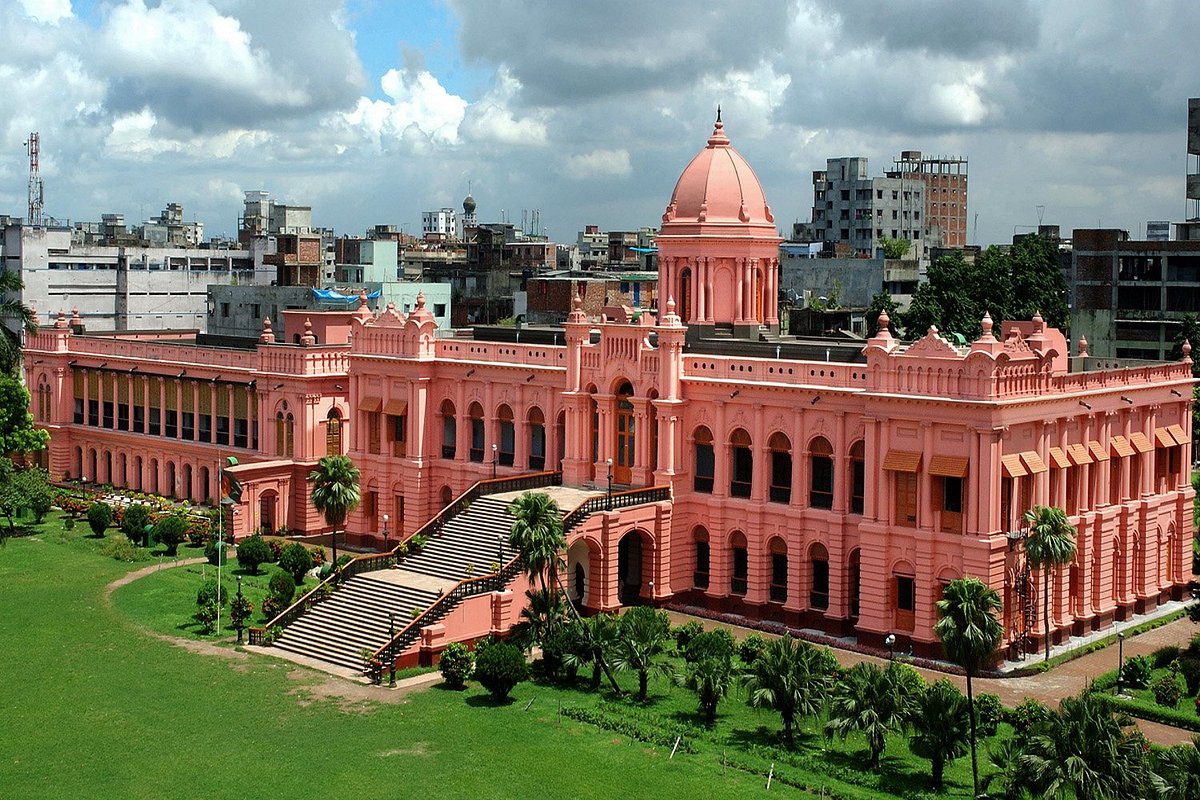Ahsan Manzil was the official residential palace and seat of the Nawab of Dhaka. The building is situated at Kumartoli along the banks of the Buriganga River in Dhaka, Bangladesh. Construction was started in 1859 and was completed in 1872. It was constructed in the Indo-Saracenic Revival architecture.
The pink palace on the banks of the river Buriganga in Islampur, old Dhaka, which was once a garden house but now it is Ahsan Manzil. There is a huge crowd of visitors here now. If you want to see the works of Mughal period very closely, you can come back from this ancient palace. The river Buriganga is just south of Prasad. Enter through the gate and see the flower garden on the side of the road. You will be fascinated by the red-blue-purple flowers. There ishuge green field in front of the Ahsan Manzil. A big ladder came down from the floor in the middle.
Let’s leave nature and go to the palace. Sheikh Inayetullah, the Land owner of the then Jamalpur Parganas (now Faridpur – Barisal), established the Rangmahal on the banks of the Buriganga in the middle of the eighteenth century. After his death, the zamdar’s son Sheikh Matiullah sold it to French merchants. Khwaja Alimullah, the father of Nawab Abdul Ghani, who lived in Begum Bazar around 1835, bought it and started living there. In 1882, Nawab Abdul Ghani rebuilt the building and named it after his son Khwaja Ahsanullah, Ahsan Manzil.
This is a two storied building. The porch and floor are made of marble stone. The shape of each room is octagonal. The inside of the palace is divided into two parts. Large dining room is to the east and library to the north. Watershed decorated to the west. The roof of the whole building is made of wood. The ground floor playroom has a separate area for playing billiards. The court hall is made of white, green and yellow stone. Living room, library and three guest rooms are on the second floor. To the west there are the dance halls and a few living rooms.
Ahsan Manzil is the first brick-and-stone architecture in Dhaka where the first electric lamp system was in the hands of the Nawabs. Manzil’s architectural style has always attracted Westerns, when Lord Curzon came to Dhaka, he lived here. The Bangladesh government preserved Ahsan Mananjil as a museum. It was opened to the public in 1992.
The number of artifacts collected so far in Ahsan Manzil Museum is 4,006. Exhibitions have been arranged in 23 out of 31 rooms of this Rangmahal.
Ticket price:
| Ticket Type | Price (BDT) | Service Charge |
|---|---|---|
| Bangladeshi (Adult) | 40.00 | 4.00% |
| Bangladeshi (Child) | 20.00 | 4.00% |
| Foreign | 500.00 | 4.00% |
| SAARC | 300.00 | 4.00% |
Ahsan Manzil opening schedule :.
Weekly closed on Thursday
Friday from 3.00 pm to 7.00 pm
Saturday – Wednesday from 10.30 am to 4.30 pm
Phone: 8391122, 73938
Public holidays are closed
How to go?
If you come to Gulistan from anywhere in Dhaka and go a little farther along North South Road, you will come to Nayabazar junction. From here you will continue to go towards Babu bazar. If you go down to the left side of Babu bazar Bridge, you will come across another turn. Islampur is on the left side of it. If you come here and ask anyone, they will show you the way to Ahsan Manzil.
Or you have to go to Sadarghat in old Dhaka first. From there you can reach Ahsan Manzil on foot or by rickshaw.
And you can contact any Tour Operator for package Tour. Amazing Tours is best Operator in Bangladesh.

